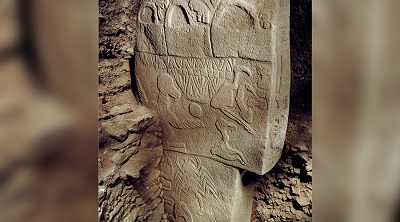Strange carvings found on human remains uncovered at Göbekli Tepe in Turkey suggest the ancient people who worshiped there belonged to a ‘skull cult.’
At 11,000 years old, Göbekli Tepe in southeastern Turkey is considered the world’s oldest temple – and just what went on at the site has perplexed researchers for decades.
Now, however, new research published in Science Advances has shown evidence that the neolithic people who built the site venerated the skulls of the dead.
“The carvings are very deep lines in the bone and are definitely intended…It’s the first evidence we have for carved human skulls anywhere,” the study’s lead author Julia Gresky told The Guardian.
Skull fragments unearthed among thousands of other pieces of bone at the hillside temple bear evidence of carving after heads had been scalped and defleshed. The carvings look very different to other marks on the skulls, according to the researchers. Fragments belonging to three adults had deep roughly-cut notches. The best-preserved piece even had a hole drilled in the top of the skull. Microscopic investigations show that all changes were made with a flint tool after the skull’s owner had died.
Fragments belonging to three adults had deep roughly-cut notches. The best-preserved piece even had a hole drilled in the top of the skull. Microscopic investigations show that all changes were made with a flint tool after the skull’s owner had died.
Researchers say the uniqueness of the modifications point to the likelihood of it being part of a cult ceremony, with the carvings suggesting rituals which had a great significance for the society.
Other artefacts found at the site also support the theory that those who visited Göbekli Tepe – there is no evidence that people lived there – worshipped the skulls of the dead. A carving on one of the pillars shows a human who has just lost their head. kull cults played an important role in the Neolithic Near East, the researchers explain. The neolithic people who visited the site believed power from the dead could be transferred to the living. The skulls were frequently decorated with paint or shells of other materials.
kull cults played an important role in the Neolithic Near East, the researchers explain. The neolithic people who visited the site believed power from the dead could be transferred to the living. The skulls were frequently decorated with paint or shells of other materials.
Skull cults played an important role in the Neolithic Near East, the researchers explain. The neolithic people who visited the site believed power from the dead could be transferred to the living. The skulls were frequently decorated with paint or shells of other materials.
H.Z

